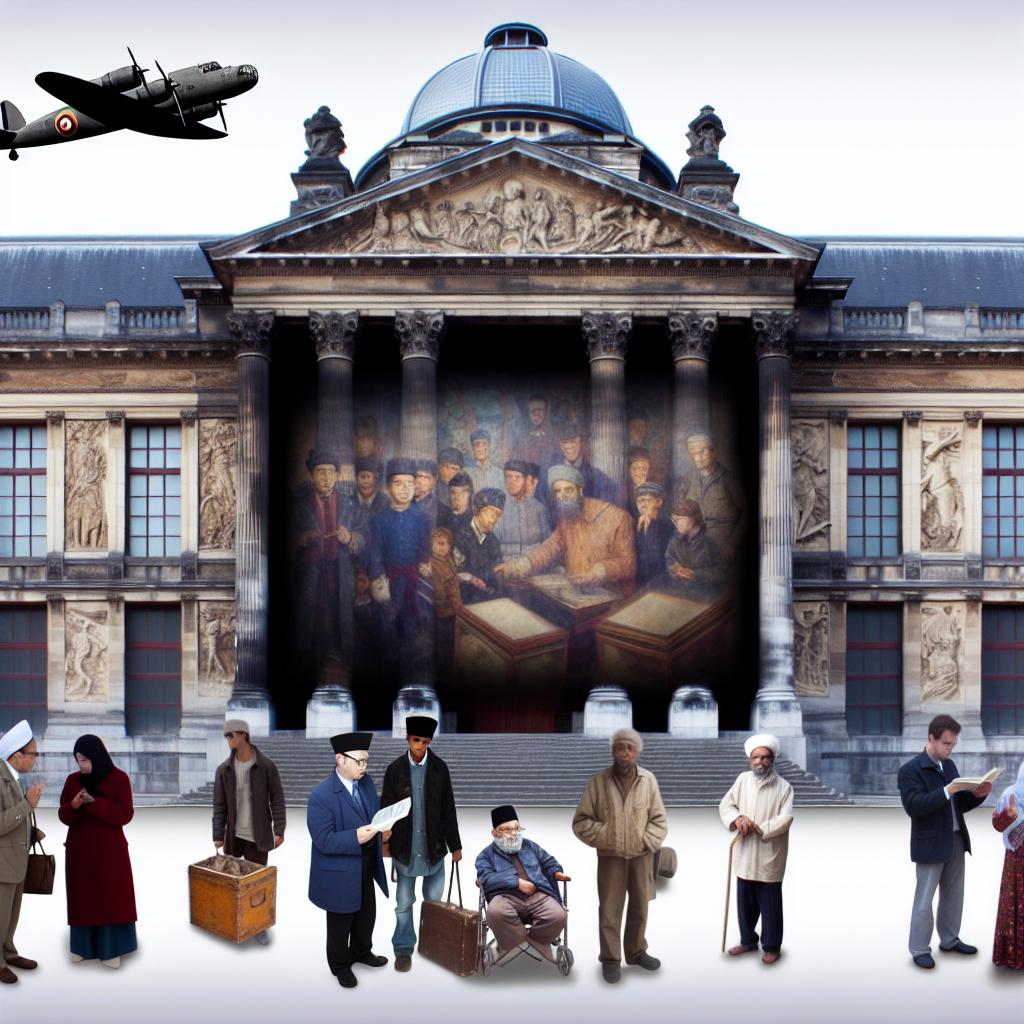Introduction
The impact of war on European museums and cultural institutions has been profound and multifaceted. Throughout history, conflicts have threatened the preservation and integrity of cultural heritage, resulting in the loss or damage of irreplaceable artifacts and artworks. These cultural centers, which hold a wealth of human history and creativity, often find themselves on the frontline, battling not only to preserve their collections during times of peace but also to protect them from the ravages of war.
Historical Context
War has long posed a threat to cultural institutions in Europe. This threat has evolved over time, influenced by the nature and scale of different conflicts. During both World Wars, for instance, numerous museums across the continent faced looting, destruction, and damage to their collections. World War II, in particular, saw extensive pillaging of art by the Nazis, who appropriated thousands of pieces for their own collections. This era of monumental destruction and appropriation significantly shaped the policies and practices of museums in the subsequent decades, as institutions were forced to reconsider how they safeguarded their treasures.
During these tumultuous periods, millions of artifacts were displaced, some of which found their way back after the war, often amidst complex legal battles. The loss wasn’t just in material terms but also in the diminished ability of cultures to pass on historical narratives and cultural identity intact. With each item lost or destroyed, a piece of humanity’s shared story was potentially lost forever.
Effects on Collections
The effects of war on museum collections can be manifold:
Damage and Destruction: The physical damage to museum properties during wars can be extensive. Bombings and artillery fire have destroyed buildings and their contents, while fires following attacks have led to the loss of historical records and artifacts. For example, the devastation caused during the London Blitz damaged several key collections, necessitating massive reconstruction and restoration efforts in the post-war era. The result of such destruction is not only a loss of valuable items but also a blow to the infrastructure required to preserve what can be saved.
Looting and Theft: During times of conflict, museums have been frequent targets for looting. The chaos and lawlessness that accompany periods of war often lead to the unlawful seizure of art and cultural objects. The theft of cultural property often leads to the permanent disappearance of significant historical items, many of which remain embedded in illegal markets or private collections. These losses are most profoundly felt in the countries of origin, where cultural narratives and identities are often grounded in these artifacts.
Displacement and Repatriation: The wars have led to artifacts being displaced from their places of origin. Efforts to repatriate stolen or misappropriated art are ongoing, but this process is complicated by legal, ethical, and logistical challenges. Many artifacts that found their way into different countries during wartime are part of contentious debates today, with host countries grappling with notions of cultural ownership and historical responsibility.
Institutional Responses
To combat the dangers posed by war, museums and cultural institutions have developed various strategies to mitigate the impacts of such disruptions. These strategies are multifaceted, involving enhanced security protocols and international cooperation, among others.
Security Measures
Institutions have bolstered security protocols to protect their collections. This includes employing advanced surveillance technology, such as state-of-the-art security cameras and alarm systems. Moreover, collaborating with governmental and non-governmental bodies has become increasingly important in safeguarding these invaluable resources. Increased international cooperation has also been fundamental in tracking and retrieving stolen artifacts. The establishment of networks dedicated to returning displaced objects has seen some successes, although the sheer scale of the problem makes it an ongoing challenge.
Technological Advancements
Many museums have embraced technology as a preventive measure. Digital archiving technologies serve to preserve records and artworks, offering a virtual backup that could prove invaluable if the physical pieces are lost. By storing items digitally, institutions can safeguard against total loss and possibly aid in future repatriation efforts. Additionally, virtual exhibitions provide an avenue to ensure continued access to culture even in times of conflict. This digital presence not only allows audiences to engage with cultural works during times when physical access is restricted but also helps in raising awareness about the institutional challenges of artifact preservation.
Future Considerations
The looming threat of political instability and conflict poses ongoing challenges for European museums. Modern institutions must remain vigilant, constantly investing in preventive measures and fostering international collaborations to safeguard cultural heritage for future generations. Countries and institutions are urged to commit to global treaties and conventions aimed at protecting cultural property during conflicts. The pursuit of technological advancements in archiving and digitalization offers hope for minimizing losses in the face of adversity. Additionally, the integration of education and public engagement with issues related to cultural preservation can foster a broader societal commitment to protecting heritage.
Realistically, protective measures must adapt to the evolving nature of conflict and the various threats museums face today, which could be technological as well as physical. Developing comprehensive strategies for emergency responses and fostering a culture of preparedness will be vital.
Conclusion
The history of war and its effects on European museums and cultural institutions underscores the fragile nature of cultural heritage during conflict. By understanding and addressing these challenges, it is possible for institutions to better protect these vital components of human history and identity. This calls for not only institutional resilience and adaptability but also a collective global commitment to preserving humanity’s common cultural heritage. Through coordinated efforts on legal, technological, and diplomatic fronts, the preservation of cultural artifacts can be more effectively ensured, helping to protect the core aspects of historical identity for future generations.

